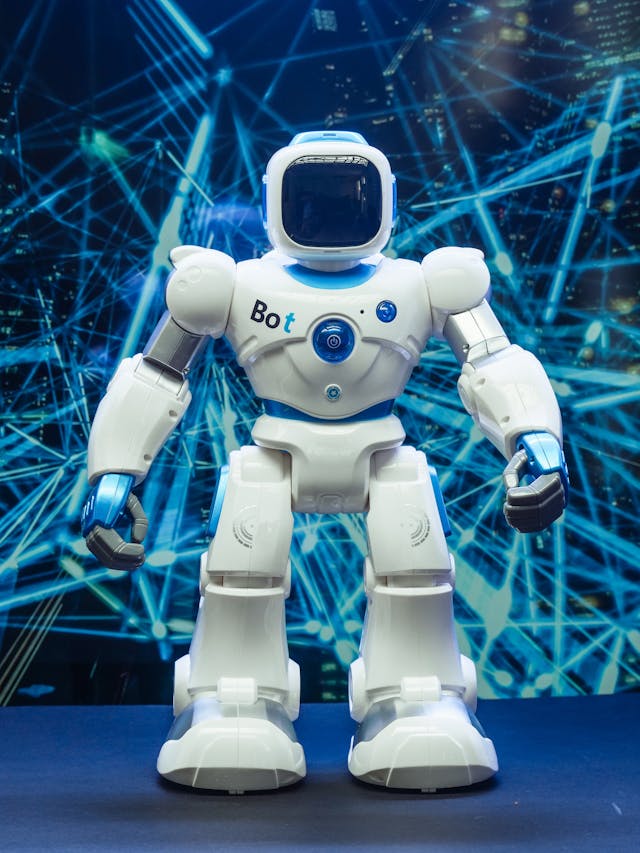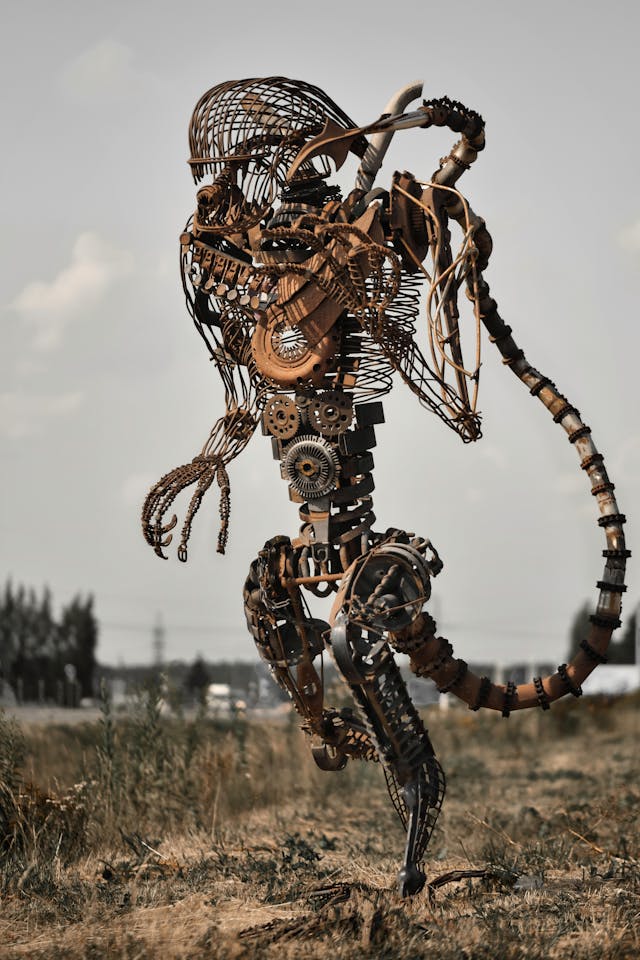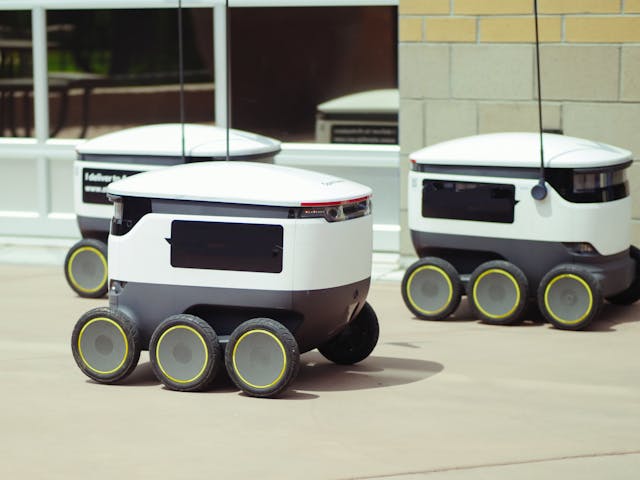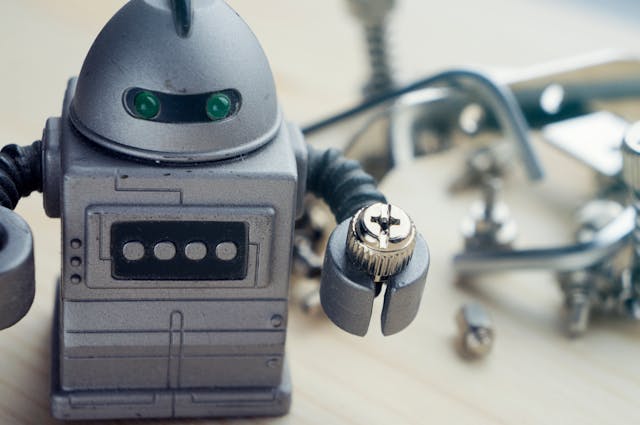Robotics are an engineering field and computer science which involves design conception manufacturing and use of robots. aim of robotics research is to build intelligent machines that assist humans in many different ways.
Robotics could take various shapes. Robots could resemble human being or come in form of robot program like robot processes automation that simulates human interaction with computer programs for repetitive rule based jobs.
Although area of robotics as well as research into possible uses and functions of robots have exploded during last century however this concept isn’t anything new.
The beginning of robotics
The word robots can be synonym for robotics.. first use of term was via Czech playwright Karel Capek who utilized term in his play of 1920 Rossum Universal Robots.

In late 1940s Oxford English Dictionary credited science novelist Isaac Asimov for being first person to have used word. In his story Asimov offered three concepts to determine behaviour of robots that are autonomous and intelligent machines:
- Humans are most vulnerable living beings.
- Robots have to obey commands of humans and not violate rule 1.
- Robots need to protect themselves from breaking rules of other organizations.
The three rules of robotics that he formulated continue to be in use until present current. It was few years later in year 1961 that very first computer controlled robot called Uni-mate and that was derived in universal automatization and was developed using designs of 1950s that were used to transport steel pieces that were scalding out of die casting machine. Stanford Research Institute robotic named Shake came out in year 1966 and became it was pioneering moving robot due to technology and software that made it possible for it to perceive and control surroundings although only in limited capacities.
Robotics Applications
Nowadays industrial robots along with different types of robotics are employed to complete routine jobs. They could take form of robot arm or cooperative robotic (robot) an exoskeleton robotic or even traditional humanoid robotics.
Industrial robots and robotic arms are utilized by both manufacturers and warehouses like ones controlled by Amazon as well as leading Buy.
In order to function mix of computer programs in conjunction with algorithmic processes that operate remote controlled manipulator actuators and controllers which include action processing perception and processing real time sensors as well as elements of automation benefit to determine way robotic system is doing.
A few more robotics applications include these:
- Home electronic. Vacuum cleaners and lawnmowers may be programmed to perform certain tasks automatically without any human involvement.
- Monitoring of homes. This includes specific kinds of robots which can be used to monitor energy use of homes as well as focus on providing surveillance services for home security for example Amazon Astro.
- Artificial intelligence (AI). Robotics is extensively used in AI as well as machine learning (ML) methods particularly for recognition of objects and natural language processing. It is also used for prescriptive maintenance and process automation.
- The field of data science. field of data science is based on robots for tasks such as cleansing of data automating data analysis data analytics and detection of anomalies.
- Military and law enforcement. Both law enforcement and military depend heavily on robotics since it is tool to conduct surveillance or reconnaissance. Robotics are also utilized for increase soldier mobility in battlefield.
- Mechanical engineering. Robotics is widely employed in production processes like examination of pipelines to check for corrosion & checking integrity of buildings structures.
- Mechanical systems. Robotics aids in development of smart factories surgical robots that are robotically assisted as well as autonomous vehicle.

- Robotics is extensively used in manufacturing of microelectromechanical systems which is process used to create tiny integrated systems.
- Healthcare and bioengineering. Surgical robots as well as assistive robots as well as lab robotics and Telemedicine robots are some instances of robots being used within field of health as well as bioengineering.
- Robotics can be utilized to do drilling painting coating inspection as well as maintenance of components in aircrafts.
Different types of robotics
Robots are built to accomplish particular tasks and function in various environments. These are main varieties of robots utilized in diverse sectors:
- Industrial robotics. Frequently used in factories and warehouses they are huge robotics that can be programmed have revolutionized entire supply chain by performing jobs like welding painting assembling & material handling.
- Robots for service. These robots are employed in various applications in variety of scenarios including domestic chores hospitality retail and healthcare. They include cleaning robots entertainment robots & personal assistant robots.
- Robots for medical use. These robots benefit with rehabilitation surgical procedures and diagnosis in health care settings. Exoskeletons robotic surgery systems as well as artificial legs are just only few of medical robots.
- Automated vehicle. These robots are mostly used for transport purposes which include autonomous cars drones drones and even delivery robots that are autonomous. They make their way through and take decisions with sophisticated sensors and AI algorithmic processes.
- humanoid robotics. These robots are designed to mimic human actions and movements. They resemble human beings and are utilized in entertainment research as well as human robot interaction.
- Contrary to majority of other kinds of machines which perform work on their own or within completely isolated work environment robots are able to share workspaces alongside human workers allowing employees to be more efficient. Robots are usually used to take away risk of costly hazardous or long lasting chores from routine of work processes. Sometimes Robots recognize and respond to movement of human.
- Agriculture robotics. These robots are employed in agricultural and farming applications. They are able to plant harvest or apply pesticides as well as examine health of crops.
- Space and exploration robotics. These robots are employed in missions that explore space as well as within harsh environments on Earth. Some examples include underwater exploration robots as well as robots used for Mars missions.
- Defence and military robotics. These robots aid in military operations including security bomb disposal & search and rescue operations. They’re designed specifically to function on terrains that are not well known.
- Robots for education. These robots are made to educate and teach youngsters on robotics programming and art of problem solving. Platforms and kits for interactive learning within academic world are typical instances of educational robots.
- Robots for entertainment. Created for entertainment purpose these machines come in form of robot pets humanoid or animal companions as well as interactive toys.
There are numerous kinds of robots that can be used for various job.
Machine learning for robotics
Machine learning as well as robotics come together in subject called robot learning. It is term used to describe robot learning is research of methods that allow robot to gain latest skills or talent by using use of ML algorithms.
A few of applications studied by robotic learning are grasping of objects categorization of objects and ability to communicate with humans. Learning could be achieved via self exploration or guidance of human operator.

In order to learn desirable way to learn smart robots collect information from human input or sensors. After that robots processing device compares recently acquired information with previous data to determine desirable strategy in light of information its accumulated. But its crucial to realize that robot will only be able to tackle issues is designed to tackle. It does not have general ability to analyze.
A few examples of recent applications of machine learning for robotics comprise these:
- Computer vision. Robots can perceive world around them & recognize their environment using their benefit in machine vision made up of ML algorithms and sensors. Computer vision can be utilized in variety of situations that include manufacturing processes like inspection of materials and patterns as well as signature recognition.
- self supervised learning. By together huge amounts of data robots can be trained to do tasks that are not specially trained for it like using neural networks. Self supervised learning is method to rise robots capacity to adjust to changing environment.
- Imitation learning. This entails training robots to imitate human behavior through demonstrating desired behaviors to them. It is method to rise speed and precision of automated processes.
- Robotics with assistive capabilities. Machine learning can be utilized to design robots that benefit users with their daily chores like mobility household chores. In particular wheelchair mounted robotic arms may focus on providing more independence for those with restricted mobility on their upper parts.
- Reinforcement learning. This involves teaching robots perform difficult jobs using trials and errors to benefit make robotic devices more efficient and effective.
The advantages and disadvantages of robotics
Robotic systems are highly sought after by many industries due to fact that they are able to rise accuracy of work decrease cost as well as improve safety of human beings.
The most common benefits of robotics are following benefits:
- Safety is arguably most important of robotics advantages since many hazardous or unsafe environments no longer need human intervention. This includes nuclear industries defense space and maintenance. Utilizing robots and robotic systems workers will not be exposed to harmful chemicals & minimize ergonomic and psychosocial risk to health.
- More productive. Robots don’t readily wear out or fatigue just like human beings tend to do. They are able to work for hours for hours without interruptions while doing routine tasks which improves efficiency of.
- Robots can perform precisely defined tasks with greater quality and precision than human are able to. They are able to eliminate possibility of inconsistencies and errors.
- Robots can be designed to accomplish many tasks & can easily be adapted to latest use cases.
- Save money. By automating repetitive jobs robots cut expenses for labor.
But despite benefits however robotics has some drawbacks.
- The suitability of task. Certain tasks are more suited to humans such as ones that demand flexibility creativity and decisions making talent.
- Economic issues. Since robots can complete vast majority of tasks that human beings can do but with much greater precision efficiency and accuracy it is real possibility that they will ultimately replace human powered jobs.
- Most robotic systems come with steep initial price. Also it can cost much for repairs and maintenance of robotics.
- An improve in dependence. Overreliance on robots could result in decline in problem solving and human capabilities along with an boost in technology related dependence.
- Security threats. There’s always chance that robotic devices could be stolen or hacked particularly when they’re used for defence and security reasons.
- Energy demands. Robots consume enough power and energy as well as constant energy to function. Maintenance and upkeep is also required to ensure they are in good functioning state.
Though robots may be able to complete certain tasks more efficiently than human beings they do aren’t perfect.
Future of Robotics
Robots are getting more effective in their flexibility autonomy and efficiency as AI machines machine learning and sensors technologies advance. They’re expected to become more important in many sectors and future applications. study conducted of Spherical Insights and Consulting estimated.. that the robotics market in world is expected to boost by $25.82 billion as of 2022 to $115.88 billion in 2032.

There are potential concerns over loss of jobs caused by rapid growth of robots in variety of sectors. In opinion of Oxford Economics Oxford Economics as many as 20 million jobs in manufacturing could be eliminated by robots in 2030. flipside is that robots could create opportunities for skillful possibilities in areas like programming and maintenance even as they face prospect of job loss.
